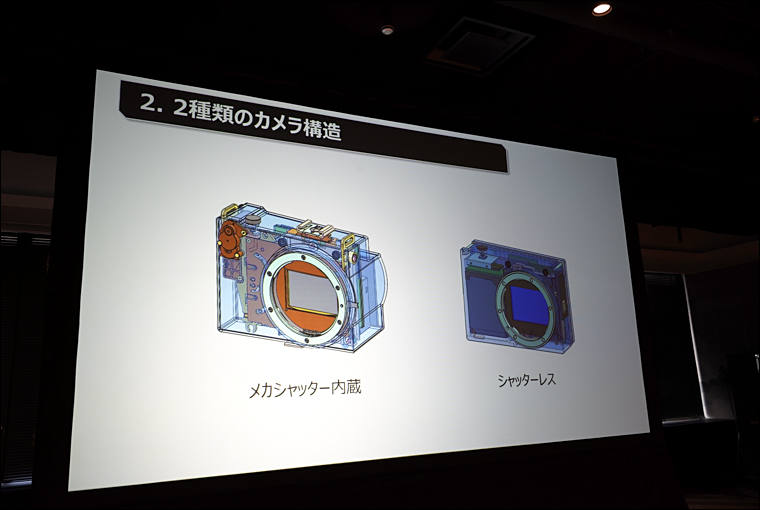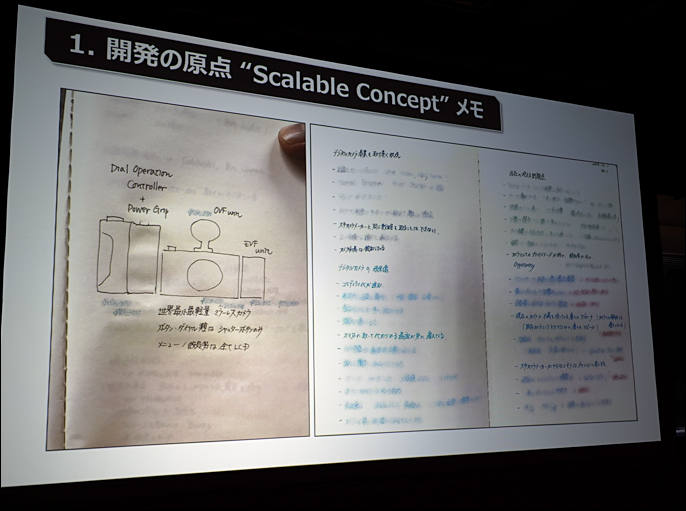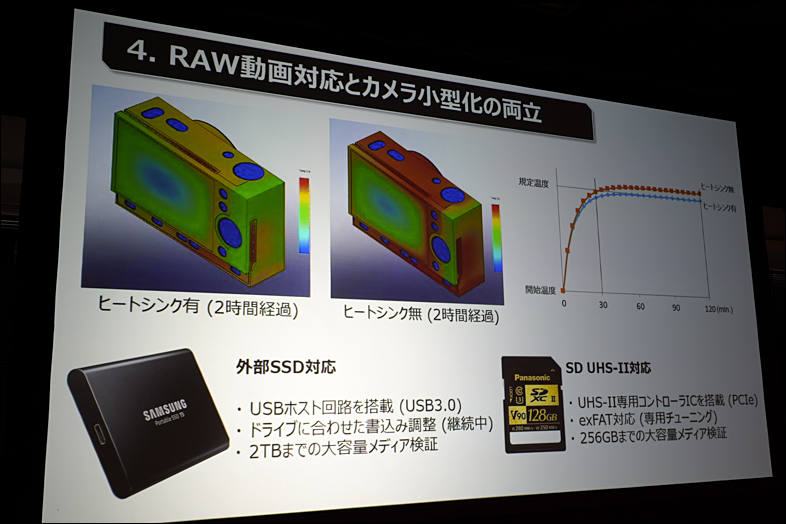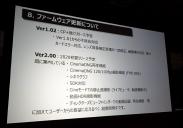
-
A solution is to use Slimraw to compress the CinemaDNG when offloading it from the camera.
-
v1.01 firmware
- The firmware will correct the phenomenon when the recording to the external SSD drive. Regardless of the recording bit and frame rate part of the first and second frames of playback will be enlarged as well as the thumbnail images when the recording format is set to Cinema DNG and the resolution is set to UHD.
- The firmware will correct the phenomenon whereby shooting in the Cinema DNG format, depending on the ISO sensitivity the level of the dark area changes for each frame.
- The firmware will correct the phenomenon whereby some parts of the recorded video become disordered.
- The firmware will correct the phenomenon whereby the camera freeze when the lens firmware is updated through files downloaded via Mac.
-
Very impressive nightshots. I don't like the grading but it shows it DR potential
-

 sa11251.jpg800 x 532 - 33K
sa11251.jpg800 x 532 - 33K -
Issues of the camera (with firmware 1.01):
- camera loses settings - including codec, resolution, audio levels - after power off or sleep
- audio levels can only be adjusted deep in the menu, gain can only go as low as -36db (causing clipped audio in loud environments)
- zebras can only be displayed in custom camera modes using custom display options, and not simultaneously with focus peaking
- picture profiles/camera display only shows low dynamic range
- exposure compensation only available as a menu item in M mode (an issue when using Auto-ISO)
More issues can be added here, for eventual submission to Sigma:
https://docs.google.com/spreadsheets/d/1FUt1bfhWYftUhlABkO91goSNEYuPZzlrxmOVGDJnQ7E/edit#gid=0
-
Reposted fstoppers user comment:
I own the fp, and it's a rather awful stills camera. It has 0.1 seconds shutter delay - with the recorded image not actually being the image you see on display after having pressed the shutter, which makes the camera unsuitable for any kind of action photography. Autofocus is contrast-detect only, slow, often hunts and unusable in low light, with AF-C being generally unusable. Metering tends to overexpose and is inconsistent between images. Rolling shutter as well as color banding under energy-saving or projector light occur because the camera only has an electronic shutter. In M mode and with Auto-ISO, exposure compensation cannot be put on a dial or easily accessible control button. Many camera settings are buried in submenus of submenus and confusingly named. The rear wheel is loose and bad to use for camera control. Flash sync speed is 1/30.
Aside from lacking features that cameras in the same price range do have, such as a viewfinder, sensor stabilization, phase-detect autofocus, double control wheels, customizable function buttons.
As a RAW video camera, the fp has various issues: In full frame mode, it only records 4K from the 6K sensor, producing an image with line skipping artifacts, aliasing and moiré. In APS-C crop mode, it doesn't have any native lenses for its mount. CinemaDNG is uncompressed (not even losslessly compressed) to circumvent RED's patents and results in enormous file sizes, as opposed to modern raw video codecs like REDcode, Blackmagic RAW or ProRes RAW. It is not clear what the native ISO of the camera is and how the sensor needs to be best exposed in Raw video mode. Zebras and focus peaking cannot be used together. The recorded CinemaDNG files are not recognized as valid CinemaDNG by Davinci Resolve and need to be imported and stitched together as separate image sequences and sound files. Sound recording levels can only set in a camera sub-submenu, and not lower than -36db, which can result in clipped audio when recording loud sources (such as rock concerts).
The camera does not present a great value as a raw video camera because Blackmagics 6K and 4K Pocket Cinema cameras are superior in practically every respect, with the 4K camera being cheaper than the fp, and the 6K producing a better image in APS-C than the fp with line-skipped full frame recording.
The fp is a compromise in every respect. As an ultraportable camera, it performs worse than a Canon EOS-M100 for a fraction of the price (except for the full frame sensor), as a full frame photo camera, it is vastly inferior to a Sony A7iii for the same price, as a video camera, it is inferior to the Blackmagic Pocket 4K and 6K (in recording options/codecs, full sensor image quality, audio connectors, time code and remote control options, menu ergonomics, touchscreen operation, on-screen assist functions including zebra and focus assist during recording etc.)
Its only selling point is that it combines, with lots of caveats and compromises, the core functionality of a full frame mirrorless camera and the core functionality of a raw video camera in a body the size of a compact APS-C travel camera.
-
some problems with Version 1 firmware have been fixed after the review posted below.
-
Both the above reviews are not exactly competent. The first reviewer mixes up Resolve's highlight recovery (which is purely a software function of reconstructing clipped color channels from information in other color channels) with the highlight rolloff of the sensor, the second reviewer doesn't understand that Resolve interprets the camera's DNG in linear color space (and doesn't know how to grade that material) and therefore thinks it has limited dynamic range and latitude.
-
Sigma fp related photos from their recent event




 sa12154.jpg760 x 510 - 37K
sa12154.jpg760 x 510 - 37K
 sa12155.jpg686 x 511 - 42K
sa12155.jpg686 x 511 - 42K
 sa12156.jpg786 x 524 - 57K
sa12156.jpg786 x 524 - 57K
 sa12157.jpg729 x 510 - 45K
sa12157.jpg729 x 510 - 45K -
I completed a video mode test of the Sigma FP and found some issues with the quality of the DNG video. The scaling of the raw data from full sensor width to 4K / HD seems to be implemented imperfectly. Some other testers I spoke with confirmed that. I’m attaching a screenshot, and the video is here:
-
Firmware v2.0 possible features
- 120fps RAW recording
- Ability to take still image in Cine mode
- Cinemagraph recording
- HDR video mode (HLG most probable)
- Proxy video recording and playback during Director’s Viewfinder Mode
Howdy, Stranger!
It looks like you're new here. If you want to get involved, click one of these buttons!
Categories
- Topics List23,990
- Blog5,725
- General and News1,353
- Hacks and Patches1,153
- ↳ Top Settings33
- ↳ Beginners256
- ↳ Archives402
- ↳ Hacks News and Development56
- Cameras2,367
- ↳ Panasonic995
- ↳ Canon118
- ↳ Sony156
- ↳ Nikon96
- ↳ Pentax and Samsung70
- ↳ Olympus and Fujifilm101
- ↳ Compacts and Camcorders300
- ↳ Smartphones for video97
- ↳ Pro Video Cameras191
- ↳ BlackMagic and other raw cameras116
- Skill1,960
- ↳ Business and distribution66
- ↳ Preparation, scripts and legal38
- ↳ Art149
- ↳ Import, Convert, Exporting291
- ↳ Editors191
- ↳ Effects and stunts115
- ↳ Color grading197
- ↳ Sound and Music280
- ↳ Lighting96
- ↳ Software and storage tips266
- Gear5,420
- ↳ Filters, Adapters, Matte boxes344
- ↳ Lenses1,582
- ↳ Follow focus and gears93
- ↳ Sound499
- ↳ Lighting gear314
- ↳ Camera movement230
- ↳ Gimbals and copters302
- ↳ Rigs and related stuff273
- ↳ Power solutions83
- ↳ Monitors and viewfinders340
- ↳ Tripods and fluid heads139
- ↳ Storage286
- ↳ Computers and studio gear560
- ↳ VR and 3D248
- Showcase1,859
- Marketplace2,834
- Offtopic1,319






